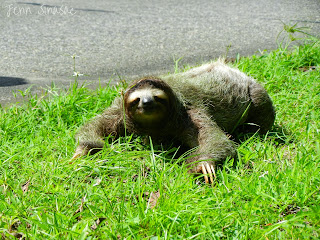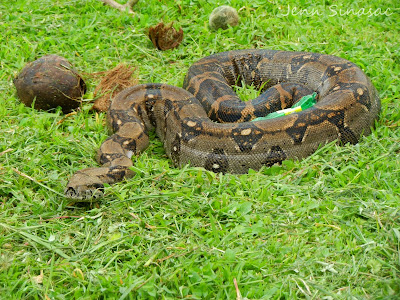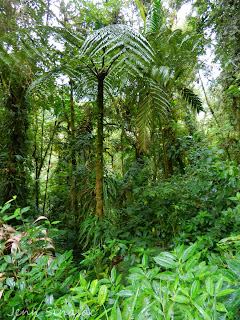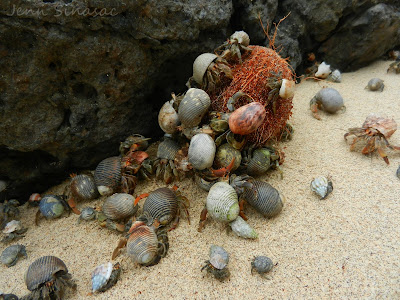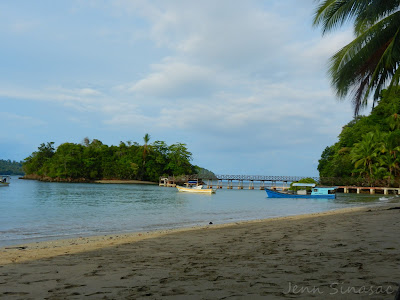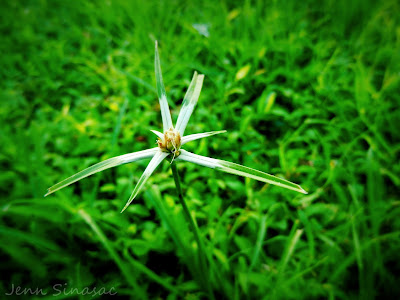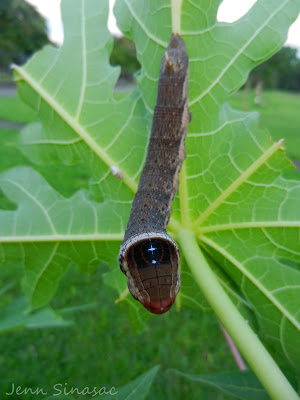 |
| Isla Rancheria (Isla Coibita) |
Well, I think Coiba Island could be considered a paradise for just about anyone. Located 22 kilometres off the Pacific coast of Panama, Coiba Island is home to a wide diversity of wildlife, including may endemic species and subspecies, as well as endangered species including 4 species of sea turtles and is the only place where Scarlet Macaws can be found in Panama. The island is surrounded by warm waters, ideal for coral reefs and an abundance of marine wildlife. On the island, several endemic species of birds and mammals, including the Coiban Agouti, Coiba Island Howler Monkey, Coiba Honeybee and Coiba Spinetail.
Coiba Island is the 2nd largest island in the Americas, aside from the Caribbean (1st is Vancouver Island). It was believed to be formed from volcanic origins in the region of the Galapagos Islands, 70 million years ago, which over millions of years, drifted to the Pacific side of Central America. Approximately 12 000 years ago, Coiba Island was a part of the mainland; eventually, the sea level rose again and Coiba was once again isolated. This explains why the wildlife on the island is similar to that of mainland Panama. The entire island and its surrounding waters were designated a national park in 1991 in order to protect the unique flora and fauna that live there and migrate through - including the annual migration of Humpback Whales. Coiba National Park expands over 270,000 hectares, with only 20% land contained in that area.
Coiba Island has remained relatively untouched, with very little human settlement over the course of its history. The island still has the remains of a penal colony that operated from 1919 to 2004, which largely took part in keeping people away. Since the designation of the national park, Coiba Island now has a ranger station and a few biological stations operated by the Smithsonian Institute on the main island and surrounding islands.
For years now I had heard so many good things about visiting Coiba Island, yet had not visited in previous trips to Panama. So, for my 30th birthday, we decided a trip to Coiba would be the best way to celebrate! Our Coiba adventure started the morning of August 24th, my birthday; we packed our bags for a few days and headed to Panama City. From there we traveled by bus to Sona, then to Santa Catalina in the province of Veraguas, on the Pacific coast of Panama. Happy to arrive and starving from the long drive, we settled into Cabanas Rolo, a decent hostel in town. We were both craving seafood, and found a small restaurant that made us excellent fried corvina (seabass) loaded with a generous side of patacones - the perfect birthday meal! Then we started asking around for tours to Coiba. We were told that to stay overnight on the island we would need a group of 6 people. Luckily, we came across 3 Spanish travelers seeking more people to stay overnight on the island as well, which worked out perfectly. We arranged our tour for the next 2 days, enjoyed a few cold beers along the beach, and had a good night sleep after a long travel day!
 |
| Humpback Whales |
The next morning we were up early and met our guide, Victor, and the rest of our group. There are no restaurants on Coiba and you cook for yourself at the ranger station, so we bought food for the trip and headed out to sea shortly after 8 am. Dark stormy sky didn't keep us from enjoying the boat trip; not far from the mainland, we spotted a trio of Humpback Whales - which is what I really wanted to see this trip, I had never seen whales before. It is whale migration season right now, and the waters surrounding Coiba are one of the best places to see these gigantic beauties. Carrying on to Coiba Island, the weather improved and we saw dolphins and flying fish as we approached the island. The boat trip to Coiba from Santa Catalina is approximately 1.5 hours.
 |
| Ranger station on Coiba Island |
We arrived at the ranger station in good time and got settled into our cabin. Situated right along the water's edge, with a beautiful white sand beach and palm trees, this is truly a paradise! Compared to other ANAM ranger stations I have stayed at in Panama, this one was by far the best. It is a decent size, comfortable beds, sheets provided and has private bathrooms in the cabins.
 |
| An invasion of hermit crabs |
The main activity we did for the 2 days was snorkeling - Coiba is a wonderful location for scuba diving and snorkeling. After dropping off our bags at the ranger station, we eagerly headed to Isla Granito del Oro. This tiny island is surrounded by tropical coral reefs and was a great start to our snorkeling adventure. Here we saw an abundance of tropical fish - parrot fish, trigger fish, puffers and blennies, and dozens of different species, big and small - I wish I had an underwater camera to remember them all. The most memorable moment on Isla Granito del Oro, however, were the hermit crabs. We found a coconut and opened it up. Moments later, dozens of hermit crabs emerged, seemingly from nowhere yet from every which direction! Worse, we decided to eat our sandwiches here. As it turns out, hermit crabs are very fond of coconut, and ham sandwiches. Within minutes we were encroached upon by hundreds of hermit crabs, all wanting a bite of our lunch! Our two days at Coiba offered us plenty of snorkeling, a little bit of hiking, and time to relax and enjoy the beaches. Further underwater sightings included White-tipped Reef Sharks, Green Sea Turtle, Southern Ray, Reef Manta Ray, coronetfish, moray eels, prawns, 15-point starfish, clams, and much more.
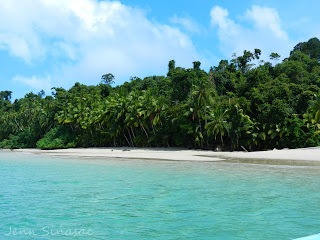 |
| Isla Rancheria |
The next morning, Victor took us over to Isla Rancheria (also called Isla Coibita), not far from Coiba Island. The beach, with beautiful white sand and layered with palm trees, surrounded by pristine crystal blue waters and reef, seemed as if it's out of a travel magazine. While eating fresh coconut, we spoke to the island ranger, who gave us permission to visit the Smithsonian Institute biological station located on the island and we spoke to a staff member about the work they do in the islands.
After our two days exploring the northern part of Coiba Island, we headed back to Santa Catalina. Just before reaching the mainland, Victor stopped us on a tiny island, surrounded by black sand beach. We had a small lunch here, and explored the island, looking at beautiful shells and (more) hermit crabs. There was no other boat or person in sight. It seemed to good to be true. Our Coiba adventure had come to a close, but memories will stay strong for years, as this is truly one of the most incredible environments I have visited.
~ Jenn
